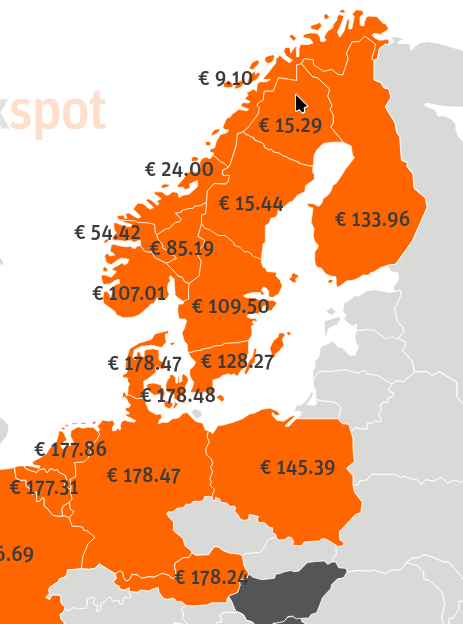It almost looks like having essential infrastructure like the power grid run by profit driven private enterprises is a bad idea for everyone except power company CEOs and shareholders.
It’s actually good for the energy transition, and therefore ecology and climate protection.
Solar is getting cheaper and replaces fossil fuels in the energy mix. However, that is only happening because there is a financial incentive for energy companies to invest in solar.
Both Sweden and Norway have poor electricity transmission links in their own countries, meaning that power is often far cheaper in the north, where much of it is generated, than in the south, where most of it is consumed.
So the issue is not too much interconnection, but rather too little …? But of course it’s much easier to decommission existing infrastructure than it is to build new infrastructure.
First: Norway is a really long country. Standing in southern Norway,you’re closer to Italy than you are to northern Norway.
Second, nobody lives in the north. Connecting them to the grid would help a little, but their energy is also cheap because there are not many people up there. It’s not like they produce enough energy to substantially affect the German market.
Third, northern Norway is cold and dark. The few people who live there would die in winter if energy gets expensive.
I guess you’ve got a point there.
Bit if both. Not enough connectivity within makes the connection to Germany controversial.
The whole thing could be sorted out by creating pricing areas within Germany, isolating the not so power hungry north from factory intensive south, where price would be higher where power is actually consumed.
More cooperation needed to sort these things out, not less. Norway is moving in the wrong direction here, but I fully understand why since Germany seems unwilling to understand or fix the problem. Or maybe unable, I don’t know.
Not enough connectivity within makes the connection to Germany controversial.
Yeah, but that impulse to hurt the
rather than to find an actual fix is … very human.Germany seems unwilling to understand or fix the problem. Or maybe unable, I don’t know.
The idea of pricing zones is unfortunately caught up in German federal structures. One major result of such zones would be that the two largest federal states, Bavaria and Baden-Württemberg would have to pay higher energy prices than more Northern states for a while. Both states are wealthy, have a lot of industry, and are very influential. Inconveniencing them until they get more wind power built out is an issue.
I’m not on board with blaming foreigners at all, which is why I think Norway is doing the wrong thing, but I understand the sentiment.
Seems both Germany and Norway (and Sweden) have some things to sort out.
Relevant (German language):
https://www.bundesnetzagentur.de/SharedDocs/Pressemitteilungen/DE/2024/20240830_Netzkosten.html
Right, so there won’t be pricing zones but taxation zones which will make electricity cheaper in parts of Germany.
That’s only a partial solution, as it won’t solve the interconnection/redispatch issues within Germany either though. I.e. right now, when cheap Northern German wind energy can’t be transported to the Southern states, wind turbines will be turned off and gas turbines near the consumers will be started, and that (actually expensive) energy will then be sold for the price the of (much cheaper) wind energy.
Pricing zones would fix that issue because consumers wouldn’t be incentivized to consume energy that can’t be transported to them anyway. They would also further encourage more wind turbines in the south.
First of all for a wider look:

https://www.energy-charts.info/charts/price_average_map/chart.htm?l=en&c=DE&interval=year
This is the average spot market price for each zone for 2024 until today(The link will adjust the picture unfortunatly not). Currently the big driver is the high gas price. It has gone down, but it is still higher then before Russia cut of supply. However massive deployment of renewables is driving down prices and you can tell fairly well, who uses the least fossil fuels in their grid just from the price.
Looking at the map, this looks like an intra-norway problem:
https://www.epexspot.com/en/market-results

Swedish site to show the prices and energy transfers. The numbers should make sense even if the language doesn’t. Anyone got something similar for all of Europe?
The answer to my own question is here: https://app.electricitymaps.com/map/24h




